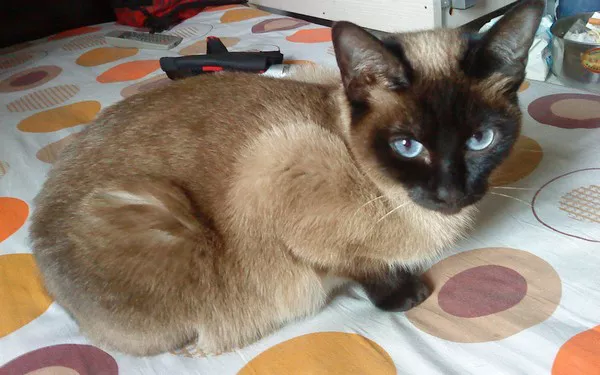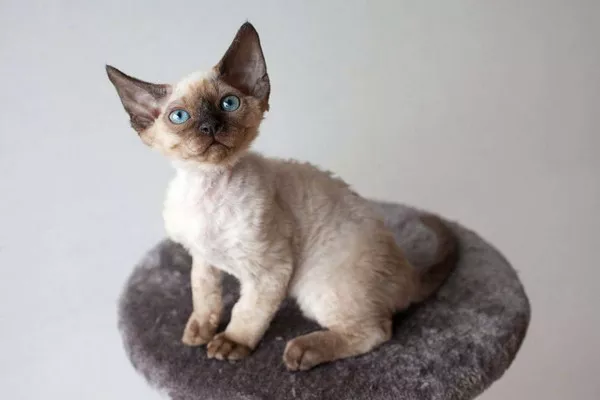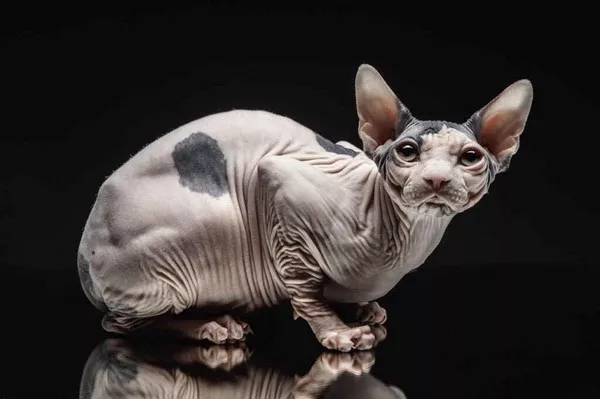Kittens are born with the most enchanting and captivating blue eyes, resembling tiny sapphires. As they grow, many cat owners eagerly anticipate the moment when these striking blue eyes transform into their permanent adult eye color. The process of a kitten’s eyes changing color is a natural and intriguing phenomenon, influenced by various factors. In this comprehensive article, we will explore the stages of eye color development in kittens, the science behind it, and answer the question: When do kittens’ eyes change color?
Understanding Kitten Eye Color
Before diving into when kittens’ eyes change color, it’s important to understand the basics of eye color genetics in cats. Eye color is determined by the presence of pigments in the iris, the colored part of the eye. In cats, the primary pigments responsible for eye color are melanin and lipochrome. The specific combination and concentration of these pigments determine the eye color a cat will have.
Melanin: Melanin is responsible for brown, black, and orange colors in a cat’s eyes. Higher melanin levels result in darker eye colors, such as brown or black.
Lipochrome: Lipochrome is responsible for yellow and green eye colors. It is a yellow pigment that can dilute or mask the melanin pigment in the iris.
Kittens are born with underdeveloped eyes and a lack of pigmentation in their irises, which is why they initially have blue eyes. As they age and their eyes mature, the presence and concentration of pigments in the iris change, leading to the transformation of their eye color.
The Blue-Eyed Stage
Newborn kittens typically have blue eyes when they are born. These blue eyes are a result of the scattering of light by the collagen fibers in the developing iris. The actual pigments responsible for eye color, melanin, and lipochrome, are not yet fully present or active in the kitten’s eyes.
When Do Kittens’ Eyes Change Color?
The transformation of a kitten’s eye color typically begins around the age of three to four weeks. However, the exact timing can vary among individual kittens and may be influenced by factors such as breed and genetics.
The Transition Begins
Around the age of three to four weeks, you may notice some subtle changes in the appearance of a kitten’s eyes. Here’s what to look for:
Shade Variation: The deep, vibrant blue of a kitten’s eyes may start to appear slightly lighter or duller.
Hint of Color: As the blue color begins to fade, you may notice a faint hint of the future eye color beneath. This is often a yellow or greenish hue.
Complete Eye Color Change
By the time kittens are around eight to twelve weeks old, most of them will have completed the transition to their permanent adult eye color. However, it’s important to understand that some kittens may take a bit longer, and it can vary based on genetics and individual variation.
Factors Influencing Eye Color
Several factors can influence the timing and final color of a kitten’s eyes:
Genetics: Genetics play a significant role in determining a kitten’s eventual eye color. Kittens inherit eye color genes from their parents, and the combination of these genes can result in various eye colors.
Breed: Certain cat breeds are more likely to have specific eye colors. For example, Siamese cats are known for their striking blue eyes, while other breeds may have green, yellow, or amber eyes.
Individual Variation: Just as with humans, individual kittens within a litter may have slight variations in the timing and intensity of eye color changes.
Health and Diet: A kitten’s overall health and nutrition can affect their eye development. Ensuring that they receive proper nutrition and veterinary care is essential for healthy eye development.
Final Eye Color
The final adult eye color of a cat is usually set by the time they reach three to six months of age. However, in some cases, subtle changes in eye color can continue to occur as a cat matures. For example, a kitten with blue eyes may develop a slight greenish or amber tint as they age.
Predicting Adult Eye Color
Predicting a kitten’s future eye color with absolute certainty can be challenging, but there are some general guidelines based on breed and color genetics:
Blue Eyes: Many kittens are born with blue eyes, but not all of them will retain this color. Blue eyes are more common in certain breeds, such as Siamese, Ragdoll, and Birman. However, kittens from other breeds can also have blue eyes when they are young.
Green, Yellow, or Amber Eyes: Kittens that will have green, yellow, or amber eyes often show hints of these colors during the transition from blue to their permanent color.
Brown or Black Eyes: Kittens that will have brown or black eyes typically maintain their blue eye color for a shorter period before transitioning to the darker shade.
Conclusion
The transformation of a kitten’s eyes from their initial striking blue to their permanent adult color is a captivating journey that highlights the marvel of nature’s design. While the timing and final eye color can vary based on factors like genetics, breed, and individual variation, the process is a natural part of a kitten’s development.
As a cat owner, observing your kitten’s eyes change color is not only a remarkable experience but also an opportunity to learn more about their unique genetic heritage. Whether your cat’s eyes become a mesmerizing shade of green, a warm amber, or a rich brown, their eyes will forever reflect their individuality and charm, adding to the special bond you share with your feline companion. So, cherish the moments as your kitten’s eyes evolve, and enjoy the ever-changing beauty that makes each cat truly one-of-a-kind.



























